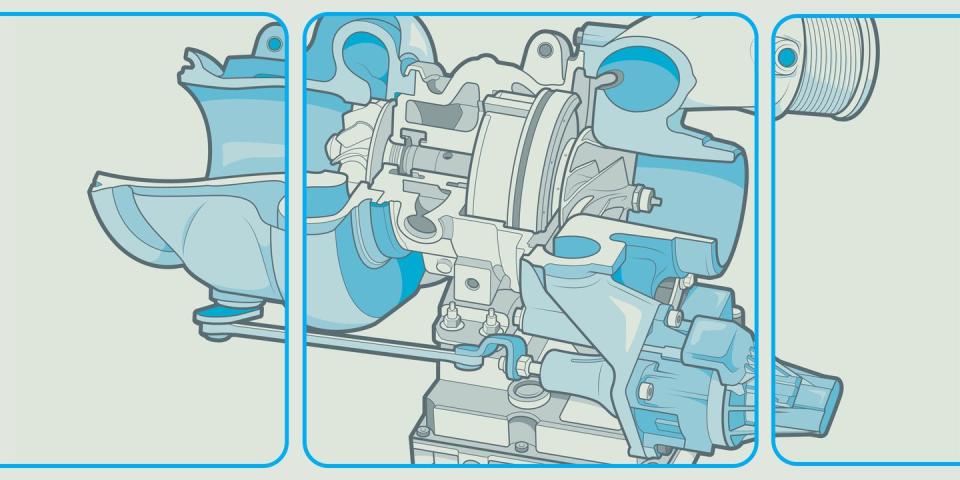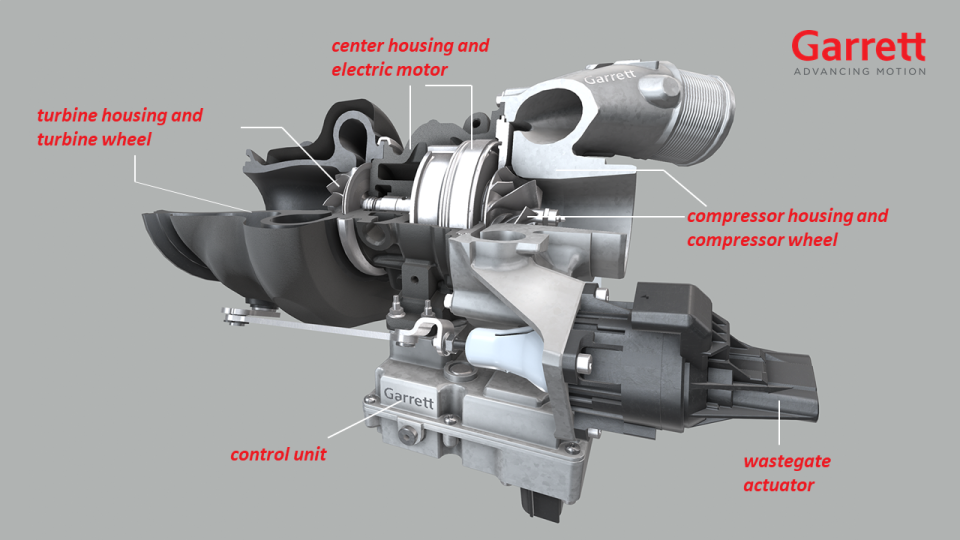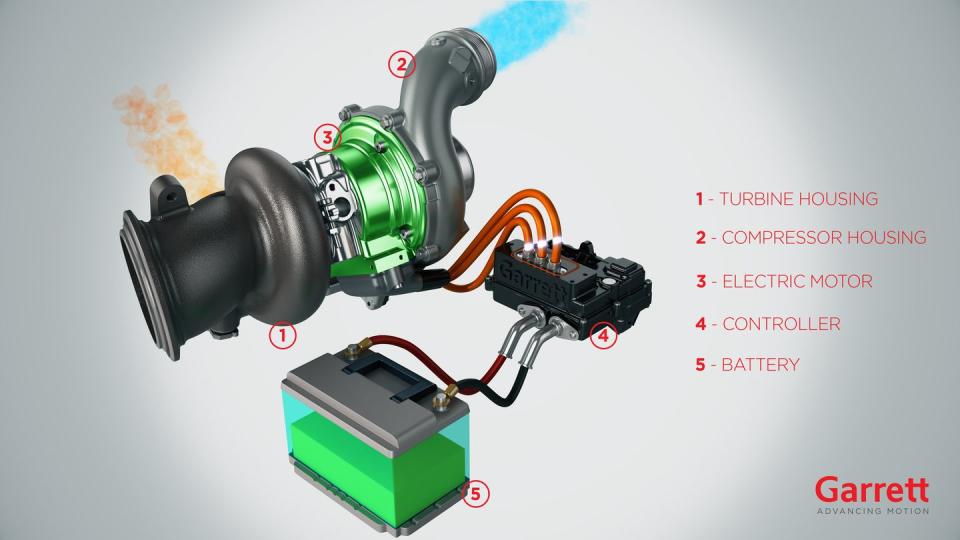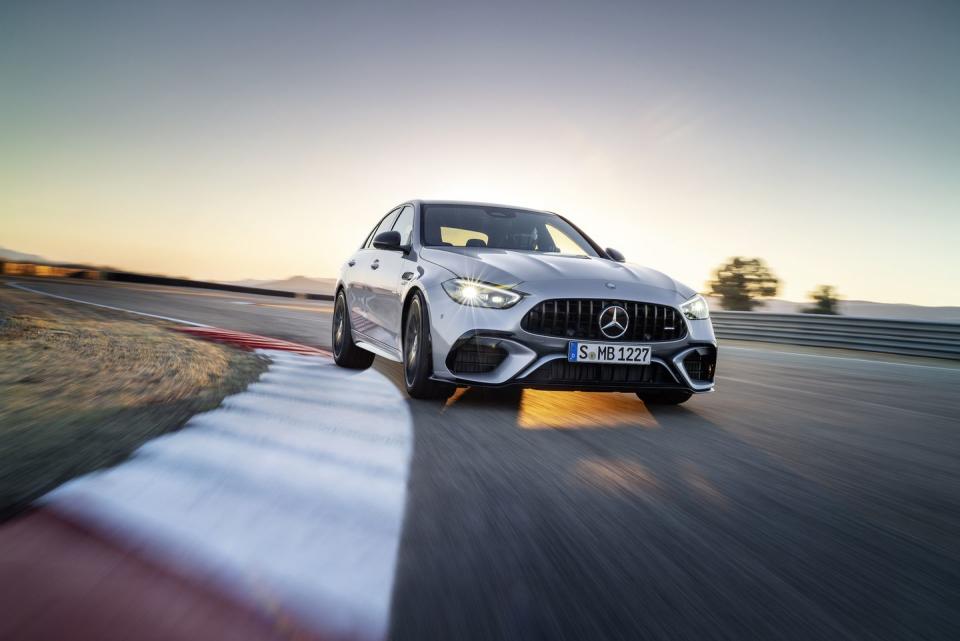How Electric Turbochargers Are Changing Internal Combustion

Now more than ever, automotive engineers have to chase efficiency wherever they can. In an internal-combustion engine, a turbocharger is a great way to boost power and efficiency for an engine of a given displacement, and over the last decade we've seen a proliferation of downsized, turbo engines replacing larger naturally aspirated units. Yet, the turbocharger itself is far from perfect.
A turbocharger is a crude device. It takes a while to spool up, the spool is entirely dictated by the flow of exhaust gasses, it wastes a lot of those exhaust gasses, and it's hot. Plus a traditional turbo can only be operated well below its maximum speed, because if it exceeds this, damage to the turbo and/or engine can occur.
An electric turbocharger can solve a lot of these problems, and more.
Let's dip into a quick, perhaps unnecessary, sum-up of turbocharger basics. Within the snail-shaped housing are two turbines on either side connected by a small shaft. Exhaust gasses blow on one turbine, which in turn spins the other called the compressor wheel. The compressor wheel increases air density in the intake, boosting engine power. Fresh air also feeds the compressor, and typically, the air from the compressor goes through an intercooler of some sort to reduce intake air temperature. On the exhaust side, there is usually a valve that opens and sends excess air downstream to the rest of the car's exhaust system once the turbine is up to a desired speed. This is called the wastegate.

An electric turbocharger is basically just a regular turbocharger with a motor attached to the turbine shaft. Simple in concept, difficult in execution, filled with possibilities. "It brings another degree of freedom, says Craig Ballis, CTO at Garret Motion, in an interview with Road & Track. "Automakers can use it for power, they can use it for efficiency, they can use it for emissions, they can use it for drivability."
Garrett has been in the turbo business for decades, and it was the first to bring an electric turbocharger to the market. Mercedes-AMG is the first automaker to offer it, in both the C43 and C63, which pair an e-turbo with AMG's 2.0-liter M139 for 402 and a staggering 476 hp, respectively. The C63 has the most power-dense engine on the market today, with 251 hp/liter, and because enough is never enough, the four-cylinder is augmented by a plug-in hybrid system for 671 hp.
It's easy to think that the sole job of an electric turbocharger is to reduce lag. That's what I thought, and indeed, that is a huge benefit of its use. In very simple terms, a larger turbocharger—with larger turbine and compressor wheels—can force more air into an engine, making more power, but the bigger you go in turbo size, the longer it takes to achieve the target boost level. Add an electric motor to the shaft, however, and you can get the whole thing up to maximum speed without waiting on exhaust gasses. (Turbo lag cannot be eliminated but it can be reduced to such a small amount that it's inconsequential.)
Ballis prefers to use the term transient response—what happens when you press the accelerator—rather than turbo lag. He points out that improving transient response not only helps with drivability, but emissions too. "You're able to control the air that goes into the engine more precisely, matching it with the fuel and the demand on the engine."

Then, there's the efficiency an e-turbo brings. An electric motor can spin in two directions, and spun in reverse, it can act as a generator. In hybrid and battery-electric vehicles, the slowing of the motors can be used to slow down the car while putting energy into the battery. On a much smaller scale, you can do the same thing with the motor of an electric turbo. "The funny thing about the turbo is over various drive cycles, typically it can be energy neutral," Ballis says. "Meaning you can generate as much as you use. It's at different points in time, but over various drive cycles, it can become energy neutral, or even energy positive."
Garrett's electric turbo still uses a wastegate, though the more precise level of boost control means less exhaust gas is wasted, and thus, a smaller wastegate can be used. Having a motor on the shaft means that the precise speed of the turbo is always known. Typically, a modern car's ECU estimates the speed of the turbo and uses the wastegate to manage boost pressure, but leaves a huge margin for error for safety and durability. This leaves performance on the table for a given turbocharger size. If you know the exact speed of your turbo, however, you can run it much closer to its operating limit without fear of exceeding it. It's not a benefit unique to e-turbos—Ferrari and Nissan both use traditional exhaust-gas turbochargers with speed sensors—but it's important to note.

Garrett started working on e-turbos 20 years ago, but found that they simply weren't viable with 12-volt electrics. Ballis says you could only have a 3-kW motor on the shaft at the maximum, and even then, it was a big draw on the system. With the rise of higher-capacity electrical architectures, electric turbocharging became viable. Most versions of the current C-Class use a 48-volt "mild-hybrid" architecture, while the C63 uses an AMG-designed 400-volt plug-in hybrid system. Mercedes also decided that the new C-Class would only receive four-cylinder power. Electric turbocharging made a lot of sense here.

 Yahoo Autos
Yahoo Autos 